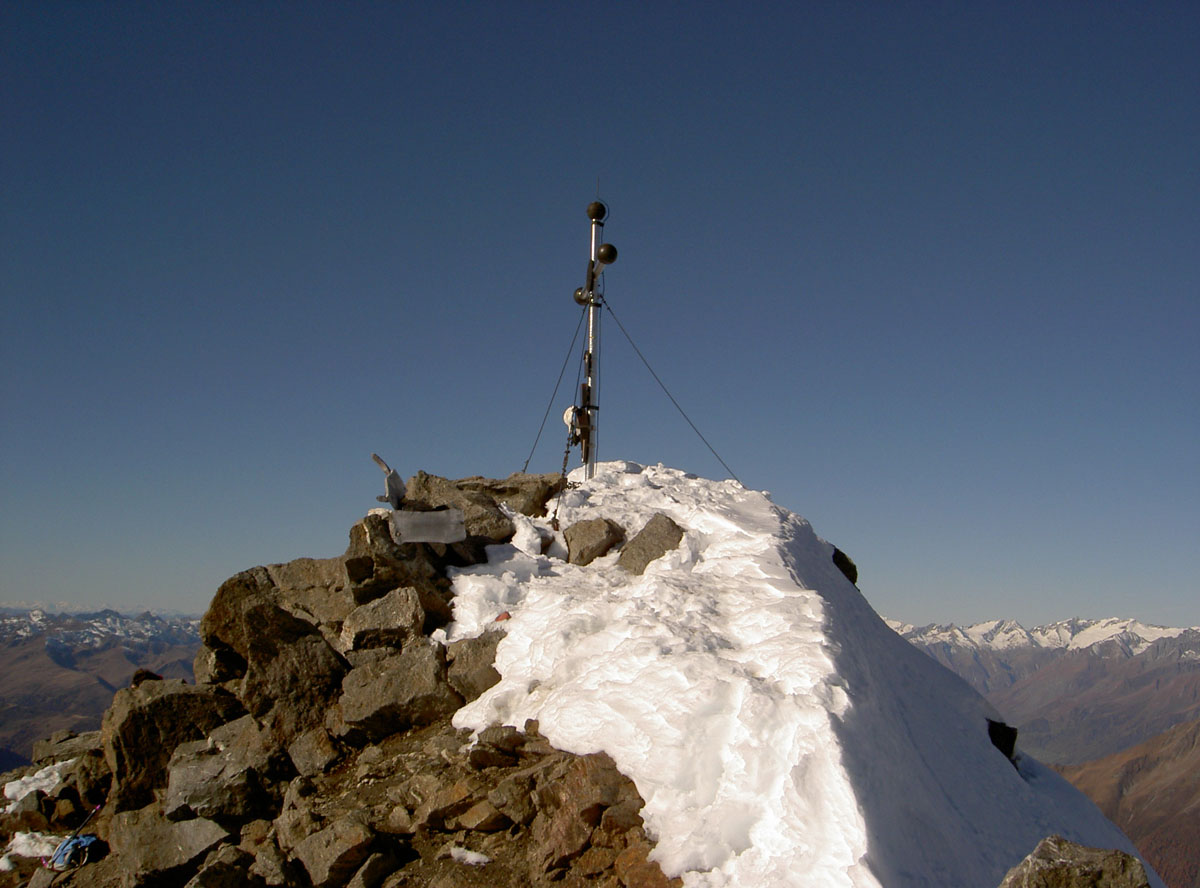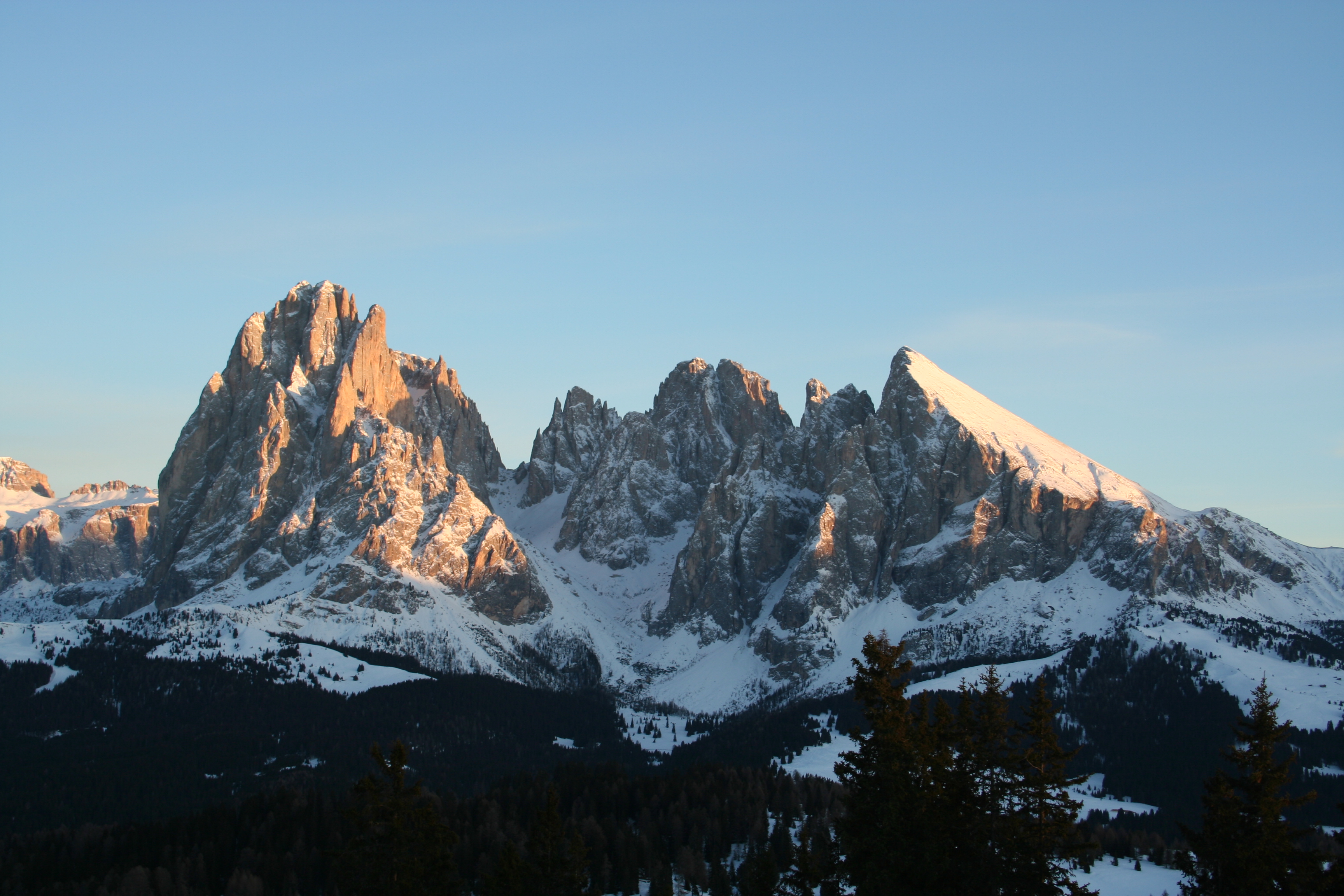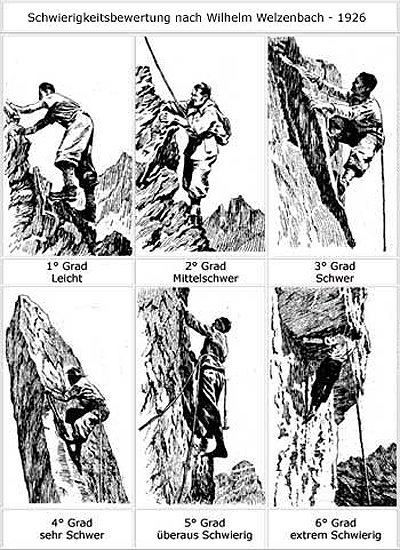|
Hoher Prijakt
The Hoher Prijakt ("High Prijakt", ) and Niederer Prijakt ("Low Prijakt", ) are a prominent double summit which, seen from the west and north, form one of the most attractively-shaped mountains of the Schober Group in the state of Tyrol in western Austria. The summit cross was placed on the lower Niederer Prijakt which is easier to see from the valley. The easiest route to the Hoher Prijakt takes about three hours from the Hochschober Hut heading for the Mirnitzscharte notch, later turning north and heading past the lake of Barrenlesee until just below the western Barreneckscharte notch and finally making its way along the unchallenging eastern arête to the summit. The route is waymarked and free of snow and ice in the summer, but does require sure-footedness. The Hoher Prijakt and Niederer Prijakt are separated by the ''Prijaktscharte'', a notch which is a good deep. The crossing of the linking ridge takes about 30 minutes and is rated as grade II, but the difficulty is so ... [...More Info...] [...Related Items...] OR: [Wikipedia] [Google] [Baidu] |
Hochschober Hut
The Hochschober () is the mountain that gives its name to the Schober Group in the High Tauern, although the summit is only the fourth highest in the group. This may have arisen because the north face of the mountain is an impressive sight from Kals. The easiest ascent is via the (2,322 m) from the south to the Staniskascharte notch (2,936 m) and along the western arête. There is another route of comparable difficulty from the east and along the upper part of the southeastern arête. The latter route may use the Lienzer Hut (1,977 m) as a base. Both routes are waymarked and now generally free of snow in the high summer, unlike earlier years, have easy klettersteig ratings ( I) and are somewhat exposed in places. Another ascent option is the partly waymarked climb from the Schobertörl (2,898 m) along the northeastern arête, crossing the Kleinschober (3,125 m). Literature and map * Alpin Club Map Sheet 41, 1:25,000 series, ''Schobergruppe'', * R ... [...More Info...] [...Related Items...] OR: [Wikipedia] [Google] [Baidu] |
Summit Cross
A summit cross (german: Gipfelkreuz) is a cross on the summit of a mountain or hill that marks the top. Often there will be a summit register (''Gipfelbuch'') at the cross, either in a container or at least a weatherproof case. Various other forms of marking or symbol such as cairns, prayer flags or ovoos may be found around the world on passes and hills, in particular on sacred mountains. In the Italian Alps a Madonna is sometimes placed at the summit instead of a cross. Summit crosses are normally about two to four metres high and are usually made of wood or metal. In April 2010, the world's first glass summit cross was erected on the ''Schartwand'' (2,339 m) in Salzburg's Tennengebirge mountains. Summit crosses are mainly found in Catholic regions of the Alps, especially in Austria, Switzerland and Bavaria, mountainous regions of Poland, but also in America. They usually stand on mountains whose summits are above the tree line, but they are also found in the German ... [...More Info...] [...Related Items...] OR: [Wikipedia] [Google] [Baidu] |
Mountains Of Tyrol (state)
A mountain is an elevated portion of the Earth's crust, generally with steep sides that show significant exposed bedrock. Although definitions vary, a mountain may differ from a plateau in having a limited summit area, and is usually higher than a hill, typically rising at least 300 metres (1,000 feet) above the surrounding land. A few mountains are isolated summits, but most occur in mountain ranges. Mountains are formed through tectonic forces, erosion, or volcanism, which act on time scales of up to tens of millions of years. Once mountain building ceases, mountains are slowly leveled through the action of weathering, through slumping and other forms of mass wasting, as well as through erosion by rivers and glaciers. High elevations on mountains produce colder climates than at sea level at similar latitude. These colder climates strongly affect the ecosystems of mountains: different elevations have different plants and animals. Because of the less hospitable terrain a ... [...More Info...] [...Related Items...] OR: [Wikipedia] [Google] [Baidu] |
Mountains Of The Alps
This page tabulates only the most prominent mountains of the Alps, selected for having a topographic prominence of ''at least'' , and all of them exceeding in height. Although the list contains 537 summits, some significant alpine mountains are necessarily excluded for failing to meet the stringent prominence criterion. The list of these most prominent mountains is continued down to 2500 m elevation at List of prominent mountains of the Alps (2500–2999 m) and down to 2000 m elevation on List of prominent mountains of the Alps (2000–2499 m). All such mountains are located in either France, Italy, Switzerland, Liechtenstein, Austria, Germany or Slovenia, even in some lower regions. Together, these three lists include all 44 ultra-prominent peaks of the Alps, with 19 ultras over 3000m on this page. For a definitive list of all 82 the highest peaks of the Alps, as identified by the International Climbing and Mountaineering Federation (UIAA), and often referred to as the ' ... [...More Info...] [...Related Items...] OR: [Wikipedia] [Google] [Baidu] |
Alpine Three-thousanders
Three-thousanders are mountains with a height of between , but less than above sea level. Similar terms are commonly used for mountains of other height brackets e. g. four-thousanders or eight-thousanders. In Britain, the term may refer to mountains above . Climatological significance In temperate latitudes three-thousanders play an important role, because even in summer they lie below the zero degree line for weeks. Thus the chains of three-thousanders always form important climatic divides and support glaciation - in the Alps the contour is roughly the general limit of the "nival step"; only a few glaciated mountains are under (the Dachstein, the easternmost glaciated mountain in the Alps, is, at , not a three-thousander). In the Mediterranean, however, the three-thousanders remain free of ice and, in the tropics, they are almost insignificant from a climatic perspective; here the snow line lies at around to , and in the dry continental areas (Trans-Himalayas, Andes) ... [...More Info...] [...Related Items...] OR: [Wikipedia] [Google] [Baidu] |
Alpine Club Map
Alpine Club maps (german: Alpenvereinskarten, often abbreviated to ''AV-Karten'' i.e. AV maps) are specially detailed maps for summer and winter mountain climbers (mountaineers, hikers and ski tourers). They are predominantly published at a scale of 1:25.000, although some individual sheets have scales of 1:50.000 and 1:100.000. The cartographic library of the German (DAV) and Austrian Alpine Clubs (OeAV) currently has about 70 different high mountain maps. Also, individual map sheets of the Alpine region or other interesting mountain areas in the world are continually being published. The publication of its maps has been a function of the Alpine Club since 1865. The reason the two clubs still issue their maps is to complement the range of more or less good official maps of the high mountains with special large-scale maps. This is especially true for the Austrian Alpine region, which is the classical field for Alpine Club branches (sections). Here, there are no official maps at a ... [...More Info...] [...Related Items...] OR: [Wikipedia] [Google] [Baidu] |
Notch (geography)
In geomorphology, a col is the lowest point on a mountain ridge between two peaks.Whittow, John (1984). ''Dictionary of Physical Geography''. London: Penguin, 1984, p. 103. . It may also be called a gap. Particularly rugged and forbidding cols in the terrain are usually referred to as notches. They are generally unsuitable as mountain passes, but are occasionally crossed by mule tracks or climbers' routes. The term col tends to be associated more with mountain rather than hill ranges. It is derived from the French ''col'' ("collar, neck") from Latin ''collum'', "neck". The height of a summit above its highest col (called the key col) is effectively a measure of a mountain's topographic prominence. Cols lie on the line of the watershed between two mountains, often on a prominent ridge or arête. For example, the highest col in Austria, the ''Obere Glocknerscharte'' ("Upper Glockner Col", ), lies between the Kleinglockner () and Grossglockner () mountains, giving the Kleingloc ... [...More Info...] [...Related Items...] OR: [Wikipedia] [Google] [Baidu] |
Prijakt From E
The Hoher Prijakt ("High Prijakt", ) and Niederer Prijakt ("Low Prijakt", ) are a prominent double summit which, seen from the west and north, form one of the most attractively-shaped mountains of the Schober Group in the state of Tyrol in western Austria. The summit cross was placed on the lower Niederer Prijakt which is easier to see from the valley. The easiest route to the Hoher Prijakt takes about three hours from the Hochschober Hut heading for the Mirnitzscharte notch, later turning north and heading past the lake of Barrenlesee until just below the western Barreneckscharte notch and finally making its way along the unchallenging eastern arête to the summit. The route is waymarked and free of snow and ice in the summer, but does require sure-footedness. The Hoher Prijakt and Niederer Prijakt are separated by the ''Prijaktscharte'', a notch which is a good deep. The crossing of the linking ridge takes about 30 minutes and is rated as grade II In the United ... [...More Info...] [...Related Items...] OR: [Wikipedia] [Google] [Baidu] |
Sure-footedness
Sure-footedness is the ability, especially when hiking or mountain climbing, to negotiate difficult or rough terrain safely. Such situations place demands on a person's coordination and reserves of strength as well as requiring sufficient appreciation of the terrain. A person who is sure-footed is thus unlikely to slip or stumble, and will have a good head for heights when required. On many hiking trails and mountain tours, sure-footedness is assumed to be a prerequisite without ever being defined. The term is frequently used in the literature presumably to ensure that the reader is made sufficiently aware that, under certain circumstances, one false step may lead to serious consequences. Required attributes Although there is no standard definition of sure-footedness, [...More Info...] [...Related Items...] OR: [Wikipedia] [Google] [Baidu] |
Waymark
Trail blazing or way marking is the practice of marking paths in outdoor recreational areas with signs or markings that follow each other at certain, though not necessarily exactly defined, distances and mark the direction of the trail. A blaze in the beginning meant "a mark made on a tree by slashing the bark" (''The Canadian Oxford Dictionary''). Originally a waymark was "any conspicuous object which serves as a guide to travellers; a landmark" (''Oxford English Dictionary''). There are several ways of marking trails, including paint, carvings, affixed markers, posts, flagging, cairns, and crosses, with paint being the most widely used. Types of signage Paint A painted marking of a consistent shape or shapes (often rectangular), dimension and colour or combination of colours is used along the trail route. The system by which blazes are used to signify turns and endpoints in trails (see below) strongly favors the use of paint blazes. European countries usually use systems ... [...More Info...] [...Related Items...] OR: [Wikipedia] [Google] [Baidu] |
Climbing Grade
In rock climbing, mountaineering, and other climbing disciplines, climbers give a grade to a climbing route or boulder problem, intended to describe concisely the difficulty and danger of climbing it. Different types of climbing (such as sport climbing, bouldering or ice climbing) each have their own grading systems, and many nationalities developed their own, distinctive grading systems. There are a number of factors that contribute to the difficulty of a climb, including the technical difficulty of the moves, the strength, stamina and level of commitment required, and the difficulty of protecting the climber. Different grading systems consider these factors in different ways, so no two grading systems have an exact one-to-one correspondence. Climbing grades are inherently subjective.Reynolds Sagar, Heather, 2007, ''Climbing your best: training to maximize your performance'', Stackpole Books, UK, 9. They may be the opinion of one or a few climbers, often the first ascensi ... [...More Info...] [...Related Items...] OR: [Wikipedia] [Google] [Baidu] |
Tyrol (state)
Tyrol (; german: Tirol ; it, Tirolo) is a state (''Land'') in western Austria. It comprises the Austrian part of the historical Princely County of Tyrol. It is a constituent part of the present-day Euroregion Tyrol–South Tyrol–Trentino (together with South Tyrol and Trentino in Italy). The capital of Tyrol is Innsbruck. Geography The state of Tyrol is separated into two parts, divided by a strip. The larger territory is called North Tyrol (''Nordtirol'') and the smaller area is called East Tyrol (''Osttirol''). The neighbouring Austrian state of Salzburg stands to the east, while on the south Tyrol has a border with the Italian province of South Tyrol ( Trentino-Alto Adige/Südtirol) which was part of the Austro-Hungarian Empire before the First World War. With a land area of , Tyrol is the third-largest state in Austria. Tyrol shares its borders with the federal state of Salzburg in the east and Vorarlberg in the west. In the north, it adjoins to the German state ... [...More Info...] [...Related Items...] OR: [Wikipedia] [Google] [Baidu] |








